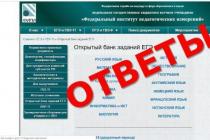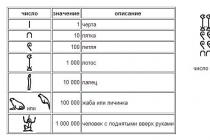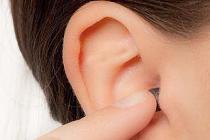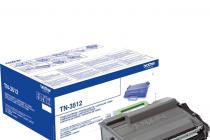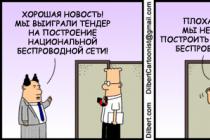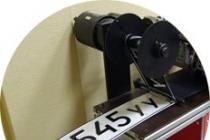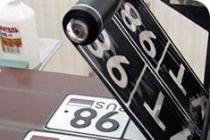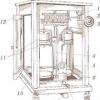Many of us use peripheral devices today. Therefore, most already know all their main components and what each of them is. The main part, which no printing apparatus can do without, is called a cartridge. After all, it is this product that is intended for transferring the coloring matter to paper, and is also responsible for its storage. You should know that each consumable corresponds to the type of a particular office equipment. However, in addition to this, absolutely all cartridges can be conditionally divided into original or compatible consumables.
A little about consumables
It is not a secret for anyone that you can buy printed accessories for a particular device at once of several types. In other words, to replace the old cartridge, you can purchase not only the original, but also an analog consumable. By the way, an original printed accessory is a product that is manufactured by a manufacturing plant for office equipment suitable for it. In turn, a compatible cartridge is a consumable that is produced by companies that have no direct relation to the originals. Nevertheless, these products are in many ways somewhat similar to each other, since the technology for creating certain cartridges is identical.
Advantages and disadvantages of the originals
Absolutely all devices have positive qualities. Original factory consumables are no exception. They are created from high quality materials using modern equipment and tools. Due to this, the service life of the cartridges is increased many times over. It is also worth adding that they have excellent yield and print quality. Naturally, for each such consumable, the manufacturing company provides at least a one-year warranty. The only and main drawback of all original consumables is their obscenely huge cost.
Differences between original and compatible consumables
The first thing to look at when comparing these two types of cartridges is their general age. Genuine consumables were introduced sometime in the mid-1980s, the day the first custom printer was invented. At the same time, their analogues appeared only ten years later. Another obvious advantage of the originals is
Hell, analogs are considered to be the ability to fill them with a coloring agent many times. Compatible cartridges can also be refilled, but there is a potential for loss of print quality. Also, do not forget about the price, which is 2 or even 3 times lower for compatible ones.
Summing up, we can say with confidence that if you need to print a lot, especially text materials, then it is best to choose a compatible cartridge for this purpose. By making this decision, you are guaranteed to get inexpensive mass printing that will do its job for a long time. It is best to install an original consumable only if you need to create a high-quality color print.
It should be emphasized that compatible cartridges belong to the highest class of alternative consumables and differ significantly in their positioning, as well as in the manufacturer's efforts spent on their production, from refilled and remanufactured.
At the same time, the creators of original consumables (and, what is important, printers and MFPs in which they are used) do not cease to assert that only their “consumables” ensure the achievement of the quality and resource parameters laid down in the devices. Of course, they cannot explicitly prevent the use of third-party cartridges (except for purely technical issues, such as chipping), but in all warranty conditions for equipment there is a clause on a disclaimer in the case of using alternative cartridges.
Our test does not claim to be comprehensive and covers all possible combinations of devices and consumables. Rather, it is an attempt, although being a first approximation, to assess the true state of affairs in the environment of consumables and to compare the main parameters of the participants.
The set of types of cartridges that participated in the testing was selected from the following considerations: they should be actively used in real work, that is, they should be used in popular office equipment; produced not only by original, but also by alternative brands; be available for sale. It was a surprise that it turned out to be difficult to find samples of printers suitable for testing among the demanded "consumables", because some of them belong to models that have long been present on the market and have been discontinued.
That is why two new HP LaserJet P1005 and LaserJet P1505 printers (and we already have them!), As well as one HP LaserJet 1020 (provided by the VM laboratory), corresponding to a very large number of office equipment in terms of consumables, are taking part in the review. The choice of Samsung devices was complicated by the fact that alternative manufacturers have not yet developed built-in chips for the new models of cartridges from this company - accordingly, the release of compatible consumables is late. in which both original and compatible cartridges like ML-2010 and ML-1610 work. This allowed us to limit ourselves to just one printer for testing a wide range of consumables.
Testing technique
To compare the resources and print quality of original and compatible cartridges for laser printers, a special method was developed (based on the one available for testing monochrome printers). The task of checking the print quality throughout the entire life cycle was solved by conducting control tests: for models with a declared resource of 1.5 thousand. prints - at marks of 500 and 1000 sheets; for cartridges designed for 2 thousand pages - also 1500, and for "three thousand" - respectively, also for 2000 and 2500 sheets. When the last of the above points was passed, control tests were displayed every 300 sheets, and so on - until the resource was exhausted.
The image set includes two vector samples for checking resolution, dot gain, fills in low saturation areas, and outputting gradient streamers. Printing texts in three different fonts and size 1.5–15 points allows you to assess their readability; a photograph containing smooth transitions of halftones and wide areas of gray, makes it possible to determine the uniformity of the application of the dye on both coordinates and the influence of consumables on the quality of screening. To detect unintended toner spills, a control white sheet was displayed, and a test block was completed to detect ghost images and measure the density of the wearable dye. It contained contrasting figures and areas with 100% filling, located from them at a distance equal to half the drum circumference, as well as at the corners and in the center of the sheet.
For printers with asymmetric maximum resolution modes, the first four test sheets were output in it and then duplicated in maximum symmetric. In total, it took up to ten pages to examine the print quality at each checkpoint.
After their output in the driver, the settings were set to normal quality (or 600 dpi) and the sheets were printed with 5% coverage in portions of 100 pieces with a readability control at each last. The cycle was repeated at each test point, which was located after 500 or 300 pages according to the methodology.
Before being installed in the printer, the cartridges were freed, if necessary, from the safety pins and tapes and vigorously shaken to distribute the toner evenly.
Signs of exhaustion of the resource and the completion of testing were noticeable areas of non-printing, stripes and other light artifacts on the control or resource test sheets. When they were detected, the displayed number of copies was counted as the final result, and the subsequent shaking of the cartridges could be performed only to obtain additional information about the remainder of the powder, but the sheets printed after it were counted.
It is worth emphasizing that the results obtained have nothing to do with the numbers declared by the manufacturers, since our resource test was interspersed with quality control, in which sheets of much denser filling were used than the standardized 5%. They can only be compared with each other and only those derived from a single printer. It is with this approach that the applied methodology gives equal test conditions.
The fill density was measured in the corners and in the center of the sheet with areas of 100% black, the average values are given in the table. For this, the first checkpoint and the closest one until the end of testing the cartridge were selected. The data were obtained using an X-Rite "Eye-one Pro" spectrophotometer, which was kindly provided by the "VM" company.
Expert opinion
Yulia Sokolova,
marketing manager in Ukraine and Moldova, representative office of "Epson Europe B.V."
According to the experience of Epson service centers, compatible consumables not only reduce the print quality, including the resistance of documents to external environmental factors, but also have a negative effect on the operation of the print head in inkjet printers, and laser ones even lead to health problems. For example, filed by the service center of the representative office of Epson Europe B.V. in Russia, inkjet printheads fail in 80% of cases when compatible consumables are used. For the elimination of such a breakdown, the user pays a fairly high price, however, as a result, he often makes claims to the manufacturer not of consumables, but of equipment, which affects the company's image. This is one of the reasons why it is our policy to prohibit the use of third-party consumables in Epson printers.
Our main task is to educate users about the rules of operating the equipment. And the first of them is working with the printing system (printer, cartridges and paper) as a single mechanism. All components of this complex are developed taking into account their mutual influence on the result in order to obtain high quality prints throughout the life of the device. If one of them is replaced with a lower quality one, then such a result cannot be achieved. The production of original consumables in terms of purity and level of automation is comparable to the production of printed circuit boards. Those who produce compatible consumables do not have access to the development of the entire complex, but conduct their research on the basis of the ready-made material in conditions different from the original ones. All of these factors prevent Epson from responding to other companies' products.
At the European and global level, Epson is fighting for patent protection. In the event of patent infringement, she holds the infringing company liable in court. On the territory of Ukraine, we do not conduct an aggressive struggle, our company is engaged in explanatory work among users, starting from the points of sale of equipment: when buying, the consumer receives information about the importance of using original consumables from sellers and promoters, and on the box and on the device itself, the markings of the cartridges and their packaging are required in detail, which gives the ability of the buyer to distinguish between original and compatible products. Also included in the box with the printer is a test set of papers and cartridges to evaluate print quality and select the correct media. Further, we use media support, including the Internet and print media. Recently, a website has been opened that helps the user to understand what problems he will face by using compatible consumables of different types: inks.epson.ru
Epson is well aware of how much consumers want to save on printing. Especially for the CIS market, we produce sets of cartridges and paper with the possibility of 10-30% savings. Of course, it is also important for us to have the entire range of original consumables on store shelves, which is why we have created bonus programs for our partners who are successfully operating in the Ukrainian market. We are also preparing a special anti-crisis program that will help users to remain faithful to the original products in the current situation, since only under this condition can the guaranteed quality and service life of the device be achieved.
HP
The three types of cartridges from this company that took part in this review belong to devices of different generations. The Q2612A model is used in a wide range of technology that has already become familiar in many offices, and also in the latest printers.
HP print cartridges are shipped in a colored cardboard box that includes the model designation, a list of compatible printers and MFPs, a multilingual warranty statement, and an email address for cartridge yields. Printed underneath the end caps are instructions for replacing and installing consumables in the appropriate HP printer. Sealing of cartridges is carried out by packing them in a transparent polyethylene bag with pneumatic shock-absorbing cavities throughout the area.
The results of the test were stunning - the level of quality, productivity and reliability of original HP toners turned out to be an order of magnitude higher. Of the 168 remanufactured cartridges tested, 47 showed record low yields — over 50% of prints produced on them were draft quality or not workable at all, while 96% of documents printed using Original HP cartridges were suitable for any task. Taking into account the re-output of low-quality documents and problems arising with low-quality cartridges, the cost of printing on non-original consumables can be more expensive.
We are active in outreach to end users — we highlight the benefits of Original HP supplies, and we run a variety of promotions aimed at both motivating end users and the seller — by providing them with objective information that they convey to the consumer. In Ukraine, as in other countries, HP has nothing against manufacturers of compatible cartridges if they do not pass off their products as original. Competition is a boon for the healthy development of any company’s business, but only as long as product differences are correctly communicated to end users.
We are convinced that it is up to the customer to decide which cartridges he needs, and therefore the offer on the market must meet different needs. We usually recommend our partners to have different products in their portfolio, insisting only on equal promotion of brands. Our task is to constantly improve the availability of original consumables on the market and expand their range.
HP offers options that can benefit a wide range of consumers: print a lot, price sensitive, and specialty creative kits that expand the capabilities of your HP printer. There are discounts for large corporate users. The prospects of cooperation, the term of the contract and the volume of the purchase are taken into account. Customers who purchase not only consumables, but also printers can count on additional support.
Research by IDC suggests that by actively managing your infrastructure, environment and print workflow, you can reduce your overall print costs by more than 30%. That is why HP cartridges are equipped with microchips, which, in combination with special software products (HP WebJetAdmin), are a key link in the automation and control of printing. Tales from the fact that the manufacturer specifically integrates chips into cartridges in order to prevent them from refilling, show the "deep" knowledge of competitors in this matter.
There are also other programs and initiatives. For example, HP Pay For Print is a fully automated supplies ordering service that optimizes supplies replenishment, dramatically reduces your printing costs, and offers comprehensive monitoring capabilities. This is the ability to move from buying a cartridge to a pay-by-copy service with support from HP and Authorized Service Partners.
In this article, we will discuss what cartridges a user can now find in the consumables market. Fortunately, their varieties have become unimaginably many.
A competent user, even before buying one or another type of printing office equipment, pays attention primarily to the cost of ownership of the device, and not the technical characteristics, which have become approximately the same for devices of the same class. This is understandable: given the dumping policy for the sale of new office equipment from some manufacturers, such as Samsung and Xerox, the cost of maintaining printers and MFPs of such devices significantly exceeds the cost of the printing devices themselves. That is, manufacturers deliberately underestimate the cost of equipment, receiving the main income from the sale of consumables for it.
So far, only HP and Canon have decided not to use blocking chips without their ORIGINAL cartridges.
So, for example, 2-3 cartridges for Samsung ML-1640/1641/1645 printers are more expensive than the printer itself. All this reduces the printer's economy to zero. In fact, you can go broke in a few months of active use of such printers.
How to save on consumables?
There are not so few saving methods, but they all have their pitfalls. We will briefly list them, and then we will understand in more detail:
- Using recycled cartridges
- Using compatible cartridges
- Using counterfeit cartridges
Refilling cartridges
The most profitable way to save 50 to 90% of the cost of the cartridge. For example, a new original HP Q2612A cartridge costs 3100 rubles, while its refilling costs 350 rubles. With a high-quality refueling, the print quality will not visually differ from the original, and the resource of the printer itself will not be reduced from this.
There is one drawback: the quality of toner and refills in general varies greatly from company to company. Many companies use multi-purpose toners instead of the correct brand that are not fully matched to each cartridge. So, without trying it, it is impossible to assess the quality of the filling. Also, if improperly refilled, there may be cases of spillage of toner in the printer, which leads to a decrease in its service life or even failure.
Ink quality is even more critical when refueling inkjet printers. If you use unsuitable, cheap, universal inks, you can easily clog the print head and thereby "kill" the cartridge (in the case of HP and Lexmark) or even the print head itself (Epson, Canon).
Refueling is completely carried out at the user's own risk and peril, so he himself should carefully consider the choice of a refueling company and not trust small-retail "basement" establishments.
Recycled (remanufactured) cartridges
Recently, more and more companies have been recycling cartridges as it is a highly profitable and reusable business.
The point of recycling is that companies buy up used cartridges 1-2 times and use their casings for further recovery. Restoring the cartridge includes: cleaning the cartridge from waste toner, refilling the cartridge, replacing the components (drum, corotron, doctor blade, magnetic roller) with new ones. The trick lies in the fact that ALL components are not always replaced, but as a rule, only worn-out ones to reduce the cost of restoration. And not all companies glue the sealing layer between the parts and the body to avoid spilling toner through the cracks.
It is impossible to control this process. We also note that one way or another, remanufactured cartridges use used cases, which no longer have the same density of pressing the two halves of the cartridge together as the original ones. As a result, there are cases of toner spilling from the slots of the cartridge, as well as not too saturated image fill.
As a rule, only laser cartridges are recycled. However, there are companies that recycle inkjet cartridges, although we strongly do not recommend such inkjet cartridges. The fact is that one way or another, the ink, once hitting the nozzles of the cartridge head, still remains there and dries up quickly enough. As a result, some of the nozzles stop working, which appears when printing in the form of thin unprinted white stripes. For remanufactured (recycled) cartridges, this is almost inevitable.
When it comes to recycling laser cartridges, you can only experiment. One can make the following recommendation: complete recycling cannot be too cheap - it cannot save up to 70% of funds, as the companies say, since the replacement parts cost at least half the cost of the cartridge. Too cheap recycling means that parts are not completely replaced.
According to one of the leading manufacturers of compatible accessories for consumables Static Control, with high-quality cartridge regeneration, print quality decreases by no more than 5%, which is invisible to the user.
However, HP's service manual states that “96% of printers returned to HP for repair due to ink leakage were damaged by non-HP refueling products or refilling technologies different from ours.” However, if the failure or damage is determined to be related to the use of a refilled cartridge, then warranty repair will be denied.
Recycling (recovery) in St. Petersburg is carried out by Rotek, Quanta System, Cartridge Recycling Center, Black Company, Colortek, Skazy, Veneta Systems, Tender Jet, NV-Neva, MPS -SERVICE "(trade mark OPS), BuDGet, Vitel.
The quality of these manufacturers can vary greatly. So, Rotek, the Cartridge Recycling Center and the Black Company give a guarantee for their cartridges, their quality is insured by Ingosstrakh and RESO-Garantia. Veneta uses the Italian recycling technology of the company "Veneta System Holding" S.p.A., which offers franchising to recycle cartridges around the world.
As for Colortek, this large and serious St. Petersburg company produces both compatible and remanufactured cartridges. Be careful, make no mistake!
We would like to draw your attention to the fact that some small companies such as NV-Neva, Vitel and BuDGet call their remanufactured cartridges compatible, although these are different concepts!
Tens of thousands of companies are doing this in Europe and even more in America. But it must be said that the majority of Russian companies do not follow the recycling technologies of their European counterparts. After all, full recycling means applying a new photosensitive layer to existing OPC drums, while most companies simply replace them. The fact is that the installations for spraying a new photolayer are quite expensive and make sense only for in-line production.
One way or another, one must understand that the use of remanufactured cartridges will not do without consequences. For example, such cartridges definitely have less reliability of mechanical fastening and cannot be refilled after recycling, but only restored using the same technology.
Compatible cartridges
It is the use of this category of products that attracts more and more interest from users. This is understandable: such cartridges are manufactured from scratch and do not cause problems with legislation. Depending on the brand, there are very high-quality samples that are quite acceptable for replacing the original ones without compromising the reliability of the equipment.
Strictly speaking, there are "honest" compatible cartridges and not quite. The first completely have a proprietary production technology and are manufactured "from scratch", have a proprietary body. Others have a completely new filling, but almost new cases. Such cases are bought from consumers immediately after the end of the original branded cartridge.
The following brands of compatible cartridges are distributed in St. Petersburg: NV Print / Atis / Jetai, Colortek, SolutionPrint (S-Print), NV-Neva (OUR CARTRIDGE, "Glavprint"), ProfiLine, Ink-Planet, Uniton, Top-print, CMJ (MicroJet), Rutone, Skyhorse (Ink house).
Compatible inkjets include NV Print, Lomond, WellPrint, PicsPoint.
Of all the brands listed, only a few are worth trusting, especially for inkjet cartridges with dubious ink quality. We have already mentioned what unsuitable ink is fraught with.
NV Print, S-Print, CMJ, Rutone fully manufacture their proprietary cartridge housings. Moreover, SolutionPrint cartridges are designed in such a way that they facilitate further refueling of these cartridges. These cartridges are completely manufactured in China.
CMJs are also completely Chinese, but their quality is more of a concern. There have been cases of spilling toner from them into printers. Plus they use cheap Fuji light green drums and AQC toner. The axles of the magnetic shafts are made of plastic, not metal, as in the original cartridges. All parts have backlash after assembly.
Colortek's production facility is located in St. Petersburg and produces both remanufactured and new compatible cartridges.
Uniton has suspended its production at the moment due to the fact that Chinese cartridges supplied by the company from abroad turned out to be cheaper than its own production. Mitsubishi toner is used.
ProfiLine laser cartridges are completely new compatible cartridges made in China. There may be both remanufactured and new compatible cartridges, AQC toner is used. Inkjet cartridges of this company use proprietary inks.
According to the Ruton company, the completely new RuTONE cartridges have a much higher print life compared to the original cartridges, because manufacturers of original cartridges artificially reduce the life of their imaging drums by reducing the thickness of the photo layer. Therefore, RuTONE cartridges can withstand more refills.
The St. Petersburg company NV-Neva actually recycles cartridges, leaving the original casings. There is no need to vouch for the build quality and refueling.
Jiaxing Tianma Printer Consumables Co., Ltd manufactures compatible office supplies under the Skyhorse brand. In the production and quality control of products, the company uses its own original developments, which allows to ensure excellent user characteristics and high quality of Skyhorse products. In Russia, the general representative of Jiaxing Tianma Printer Consumables Co., Ltd is Megatron and Revkol LLC.
Revkol also supplies toner, ink, CISS from the Skyhorse plant.
Ink-Planet products are manufactured under quality control of international organizations using raw materials from Formulabs (USA). Formulabs also supplies raw materials to some original consumable manufacturers, which indicates the high quality of consumables.
Despite their very low cost, the cartridges provide very high print quality values.
The quality of certain manufacturers of compatible cartridges should be judged by a number of characteristics:
- availability of the PCT Certificates of Conformity
- guarantees, 100% output quality control
- the quality of packaging, the use of "inflatable bags" that neutralize shocks during transportation
- Consumables Used: Static Control Components provide the best performance.
Counterfeit cartridges
Such cartridges are usually Chinese noname. They have an identical body, but may differ in the color of the gears, the absence of holograms on the box and the quality of the packaging.
Here you can find both high quality cartridges and vice versa. According to some reports, the number of counterfeits in the Russian market reaches 40% of the total volume of consumables.
There is only one advice: do not take risks, such cartridges are slightly cheaper than the originals, but they are always worse in quality.
Service engineer, Alexander Dudkin
We welcome the HabraSociety again!
Recall that the previous post (), we devoted to describing the basic principles of choosing and extending the life of laser printers and consumables for them.
An interesting proposal came up: to compare the cost of using consumables for different groups of printing equipment. The proposal is really very interesting, and since we can give a detailed (more than) answer, we hope that all this information will be useful to both private users and corporations. In general, let's get started.
There are 4 main groups of laser printers:
- personal equipment;
- small equipment;
- medium technique;
- large equipment.
We also identified 3 main groups of consumables for laser printers:
- original cartridges;
- refilled and remanufactured cartridges;
- compatible cartridges.
Having selected 2-3 top models in each of the groups of printers, we compared them according to the criterion "price of a copy", where the price of a copy is the cost of a printed document, including only the cost of consumables (cartridges) excluding printer maintenance.
Comparison of the cost of use of cartridges for laser printers
The purpose of the comparison is to give the most objective assessment of the cost of using various consumables. We made the choice of TOP models of cartridges on the basis of data from the Information and Marketing Agency "Business-Inform" (http://sforp.ru/docs/marketing/index.htm), as well as on the basis of statistics downloaded from the information system of our company.
Cartridge prices are an average of the prices of several of the leading suppliers of original, compatible and refillable / refillable cartridges.
The copy price was received by us according to the formula: 
Copy price original cartridge obtained on the basis of the arithmetic average market value.
Copy price refueled / restored indicated by us in the range of "refueling-recovery".
Copy price compatible cartridge specified in the range of cheap - expensive TM.
Group "Personal equipment"(printing up to 5,000 copies per month): 
Group "Malaya Tekhnika" (printing 5,000-10,000 copies per month):
Mid-range printers (printing 10,000 to 50,000 copies per month):
Printers "Large office equipment" (printing per month from 50,000 copies):
Thus, one can deduce INDEX the ratio of the cost of cartridges to the cost of paper.
Why did we choose paper as the constant? There are two reasons:
- paper is necessarily involved in the printing process;
- its cost is quite stable, unlike other participants in the printing process (printer, cartridges).
We obtained the indicator of the ratio of the cost of cartridges to the cost of paper in this way: 
Analysis of cartridges by indicator:
The table provides an opportunity to compare the cost of paper with the cost of cartridges and evaluate your suppliers in pricing, as well as see opportunities for savings, if necessary.
However, "economy" is just one of the criteria for choosing certain consumables for printing equipment. Besides it, an important characteristic of office printing is the "quality" of the print, and in recent years such criterion as "environmental friendliness" is gaining more and more relevance.
I would like to talk about them in a separate article, if, of course, Habr is interested. By the way, we are ready to write more detailed answers to various topics related to the field of laser (and not only) printing. If you have any suggestions about what to write about, what you are interested in hearing, we are ready to implement these suggestions!
Buy original cartridges or choose compatible counterparts? How can I save on printing costs so I don't hurt my printer and get a crisp, rich print? Why do remanufactured cartridges compete with branded consumables? Read the answers to these and other pressing questions in our article.
Did you know that in 57.3% of cases, printer breakdowns are caused by defective or damaged cartridges? If the drum unit is worn out or toner is scattered, the days until repair are numbered.
Of course, such “surprises” are mostly presented by defective, counterfeit, compatible or remanufactured consumables. This is natural. For the sake of an affordable price, you have to sacrifice the quality of materials and workmanship. But what to do if original cartridges for printers cost almost the same as the device itself, and from analogs only temporary and dubious benefits? Let's find out together if this is really the case.
Is the price of everything a head?
Yes, it is the cost that decides everything in 72.3% of cases. Let's dwell on popular models and compare prices for original, compatible and remanufactured cartridges.
As you can see, the Chinese counterparts are 55% -65% more expensive than the remanufactured ones. Originals are equal to 80% -90% of the cost of the device itself - 7,950 rubles. - 10,500 rubles.
Why is there such an extreme difference included in the price of original cartridges and analogues?
Again, everything is decided by the production technology and the quality of materials, toner.
Original cartridges: perfect quality for the cost of the printer
They are produced by the same brand as the device itself. Therefore, patented developments are used, the design features of each model are taken into account, a secret toner formula is developed, which guarantees a clear and rich application. Before release, each part is tested, and then the functionality of the entire device is checked. In this way, the manufacturer guarantees uninterrupted operation of the cartridge and obtaining bright and clear prints.
It inspires confidence, but many people cannot afford a branded product. For example, original HP ink cartridges will cost you from 4,950 rubles. up to RUB 19,030
Compatible cartridges: cheap and risky
Compatible cartridges Is an attempt by third-party companies to produce consumables using budget technology. What materials are used and how the cartridge itself is made is known only to the manufacturers themselves. This means that there is no guarantee that the toner of our own design or of questionable quality imaging drum will get along with your office equipment. Therefore, if at your own peril and risk you still decide to buy analogues of HP cartridges or Canon of unknown origin, please note that this will automatically void the manufacturer's warranty for the printer. After all, it is a defective or low-quality consumable that can provoke the device's failure.
Another serious drawback of compatible cartridges is the lower page yield compared to the original. At best, this figure reaches 80% of the declared value, at worst - only 50%. If a branded cartridge produces 400-500 printed pages, then a compatible one may run out as early as 250th.
Therefore, compatible materials have three tangible disadvantages at once: small volume, poor print quality and the risk of printer breakdown. For example, a cracked drum or toner leak. Repair and restoration of the device will cost 2,300 rubles. - RUB 4,500 and more. Therefore, it is more profitable to bypass budget substitutes for the originals.
Remanufactured cartridges: a combination of originals reliability and affordable price
Remanufactured cartridges based on original casings Is a relatively new product on the Russian market. They successfully compete in price with compatible cartridges and catch up on quality brand consumables.
What is special about remanufactured cartridges?
These are the same original consumables that have been recycled. We have already said that manufacturers with a name care about the strength, durability and high performance of their products. Therefore, the cartridge bodies themselves are reusable. In addition, it is important to understand that during operation, parts wear out at different rates and degrees. Toner is consumed, the drum is slack, the squeegee becomes dull, but the housing itself remains intact. Therefore, on its basis, a new cartridge is assembled with a filling from original parts.
How is the cartridge remanufactured?
Before processing, it is carefully checked and disassembled into parts. Each element is cleaned of toner residues and tested for professional suitability. Viable parts are retained, and worn parts are replaced with new ones.
When the cartridge is fully assembled, an additional leak test is carried out. And then the sample is waiting for control testing. If it meets all the requirements, then the print quality and visual integrity are checked.
A successful product? Yes, but it also has its pros and cons. The main one is the quality and thoroughness of the restoration, which completely depends on the work of the engineer. What parts are used, how sealed the case itself, what toner is used and many other factors affect the final result. For example, if the integrity of the body itself is broken, but chips and cracks are formed. This is a straight path for toner leakage and breakage. That is why consumers are still wary of remanufactured cartridges.
All these nuances were taken into account by the technologists of the Eco cartridge company, when in 2009 the production of “green” consumables was launched. Therefore, the manufactured product is fundamentally different from other remanufactured analogues.
Why are Eco-cartridge consumables confidently competing with new originals?
- We use new components from leading brands from Japan, China and Malaysia
All components received a guarantee from manufacturers. We additionally test every detail before installation. We carefully check the tightness of the finished product on test benches. Therefore, we are responsible for the build quality, functionality and completeness of printing.
The defective rate in our production does not exceed 1%. For analogs, this figure is 10 times higher and reaches 10%. At the same time, we immediately change defective cartridges, and the client is not left alone with a low-quality product.
Therefore, we are always ready for feedback and assistance in choosing consumables for your purposes. Before selling, we always find out not only the model and series of the printer, but also the selection criteria, daily print volume, media, etc. After that, we offer 3-4 solutions that are right for you.
An additional plus is the environmental friendliness of consumables. Recycling protects the environment from toxins. After all, if the cartridges are not disposed of, then they decompose for more than 300 years and poison mail with hazardous elements and compounds.
All these advantages make Eco-cartridge remanufactured consumables worthy competitors of the original products. They are not inferior in quality and are 3-4 times cheaper. Even compatible analogs of unknown origin lose in price by 35-75%.
Compare the advantages and disadvantages of cartridge types
| Original | Compatible | Refurbished | |
|---|---|---|---|
| Flawless print quality; Uninterrupted operation of the device |
Loyal price; Acceptable quality of the received prints; Availability for sale |
The lowest possible price; Decent print quality; Reusable; Application of original components |
|
| High price; Lots of fakes; High cost of the obtained impressions |
Small cartridge volume; May cause damage to the printer; Loss of warranty on manufacturer's devices |
The result depends on the thoroughness of the repair and the quality of the materials used in a particular production. |
Buy original cartridges or choose analogs - it's up to you. If you want to know more about the differences between different types of cartridges, visit our production and test environmentally friendly consumables, call us at +7 495 645 2552 or send a request.
We will answer your questions in detail and help you find a practical solution.

